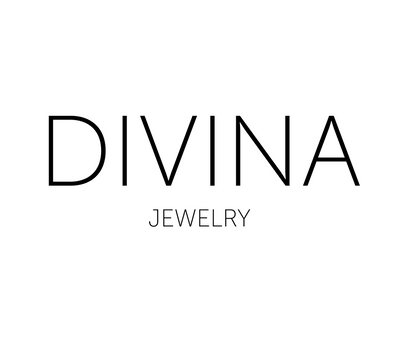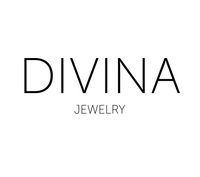Diamond Guide
Diamonds and Simulants
| Natural Diamonds | Lab-Grown Diamonds |
| Moissanite | Cubic Zirconia |
Natural Diamonds
A natural diamond is a precious gemstone formed deep within the Earth's mantle under intense pressure and high temperatures over millions of years. It is composed of carbon atoms arranged in a crystal lattice structure, which gives it its exceptional brilliance and clarity. Diamonds are created through natural processes involving carbon-bearing materials subjected to extreme geological conditions, such as volcanic activity or kimberlite eruptions. Once mined, these rough diamonds are cut and polished to unlock their dazzling beauty, resulting in the exquisite gemstones we see in jewelry.
Diamonds have a rich history, dating back thousands of years. They were highly prized by ancient civilizations for their rarity, beauty, and perceived mystical properties. The first diamond engagement ring was believed to be given by Archduke Maximilian of Austria to Mary of Burgundy in 1477, cementing the tradition of using diamonds to symbolize love and commitment. Today, diamonds remain one of the most sought-after gemstones and are often associated with luxury, status, and enduring love.
On the Mohs scale of mineral hardness, diamonds are rated as the hardest natural material, scoring a perfect 10 out of 10. Their remarkable hardness makes diamonds highly durable and scratch-resistant, adding to their appeal as a gemstone prized for its everlasting beauty.
Lab-Grown Diamonds
A lab-grown diamond, also known as a lab-created or synthetic diamond, is a diamond produced in a controlled environment that replicates the natural processes of diamond formation. These diamonds are created through either High Pressure High Temperature (HPHT) or Chemical Vapor Deposition (CVD) methods. In the lab, a small diamond seed is subjected to high pressure and temperature or exposed to a carbon-rich environment, causing carbon atoms to crystallize and form a larger diamond. The result is a chemically and physically identical diamond to natural ones, possessing the same brilliance, clarity, and durability.
The concept of lab-grown diamonds dates back to the 1950s when scientists attempted to create diamonds in a controlled setting. The first commercially available lab-grown diamonds emerged in the 1970s, but it was in recent years that advancements in technology and growing environmental awareness led to increased interest and popularity in lab-grown diamonds as a more sustainable and ethical alternative to natural diamonds.
On the Mohs scale of mineral hardness, both lab-grown and natural diamonds share the same perfect score of 10, making them the hardest known substances on Earth. Due to their identical chemical and physical properties, lab-grown diamonds are indistinguishable from natural diamonds to the naked eye and even to trained gemologists using specialized equipment. The main difference between the two lies in their origin and sourcing. Lab-grown diamonds are more environmentally friendly and ethically sourced, as they do not require extensive mining, while natural diamonds are formed deep within the Earth's crust and extracted through mining operations. The availability of lab-grown diamonds also offers consumers a wider range of options and price points without compromising on quality or beauty.
Moissanite
Moissanite is a dazzling and brilliant gemstone known for its diamond-like appearance and exceptional fire. Originally discovered by Nobel Prize-winning chemist Dr. Henri Moissan in 1893, it was later named in his honor. Natural moissanite is extremely rare and found in small quantities, but today, most moissanite used in jewelry is lab-grown. On the Mohs scale of mineral hardness, moissanite scores 9.25, making it one of the hardest gemstones available, just below a natural diamond's hardness of 10.
Moissanite is often compared to natural diamonds due to its striking visual similarities. With its high refractive index and dispersion, moissanite exhibits brilliant flashes of colored light, also known as "fire," much like a diamond. It is nearly as durable as a diamond, making it a popular and more affordable alternative for engagement rings and other fine jewelry pieces. Moissanite's eco-friendly origin and excellent affordability make it an appealing option for those seeking the brilliance of a diamond without the higher price tag. With its captivating brilliance and impressive hardness, moissanite has gained recognition and admiration in the world of fine jewelry, offering a brilliant and cost-effective choice for those seeking a dazzling gemstone with a touch of luxury.
Cubic Zirconia
Cubic Zirconia (CZ) is a synthetic gemstone renowned for its affordability and diamond-like appearance. It was first developed in 1976 by scientists in the Soviet Union as a cost-effective alternative to natural diamonds. CZ is created through a process that mimics the crystal structure of a diamond, resulting in a brilliantly clear and flawless gemstone. On the Mohs scale of mineral hardness, cubic zirconia has a rating of approximately 8 to 8.5, making it less durable than natural diamonds and moissanite, which have hardness ratings of 10 and 9.25 respectively.
While cubic zirconia closely resembles a diamond in its brilliance and clarity, it differs significantly in terms of hardness and durability. Natural diamonds are the hardest known substance, and their remarkable resilience makes them ideal for daily wear. Moissanite, on the other hand, has a hardness rating slightly lower than a diamond, offering excellent durability suitable for most jewelry settings. Although cubic zirconia can be a cost-effective option for those seeking a diamond-like appearance without the high price, it is less scratch-resistant and may show signs of wear over time. Overall, each gemstone offers its unique set of attributes and is valued by different individuals based on their preferences and budget considerations.

